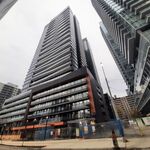I have a question, it's probably been answered before but this thread is huge. Does LIM reliability actually suffer during snowfall or very cold temperatures? I do see a large uptick in delays and shutdowns on the RT during the winter (before the world ended, I used to ride the RT Monday-Friday to get to DT) - but is that a product of the technology itself (which I've heard people say) or is it a result of deferred maintenance combined with old, wonky trains? Or perhaps this particular implementation of LIM tech (ICTS?) was not up-to-par with Toronto's environment?
Now if LIM in general is indeed unreliable in our environment when compared to subways/LRTs, well RIP. But if it isn't, then we're building a 6+ billion dollar subway just because we don't like to climb 3 flights of stairs at Kennedy, lol. The transfer does become an issue during crush hour when that terminal becomes very crowded, but we could just fix that transfer for less money if we need to (i.e., build a short tunnel and dig a new station box, then demolish the elevated guideway).
I believe this actually splits into two separate questions. One: is it possible to upgrade/refurb the SRT line to something newer and more reliable, but serving the same role between Kennedy to STC. The other: is it worth building the more expensive subway rather than accepting a less expensive SRT refurb.
The answer to the first question is a definite yes. Some already mentioned that the LIM reaction rail can be heated, or the whole line roofed to protect from snow. Furthermore, retaining the LIM propulsion is not a must. One can replace the LIM rolling stock with conventional rotary-motor rolling stock. A bigger issue is the size of cars; small cars have a hard time handling the existing demand, while bigger cars, no matter LIM or rotary, will necessitate rebuilding parts of the system. But that's all doable.
The second question is conceptual rather than technical, and the opinions are obviously split. IMO, the subway extension makes sense even though it is more expensive than the SRT refurb. The subway extension will result in a subway network spread somewhat evenly across the 416. On the contrary, forever ending the subway at Kennedy would result in a situation where most of the city is within a reasonably short distance from at least one subway station, but a large triangle in the east (much of Scarborough) is far from any subway. A brief glance at the 416 map with TTC subways can illustrate that.
The ridership projections for SSE aren't stellar but decent; about twice the peak ridership of the Sheppard subway, and 4x the peak ridership of the planned Eglinton West tunnel. So, choosing between something that costs $6B and will make the residents happy, vs something that costs $3B and will cause future contention because of the lopsided subway coverage, I'd rather go for the first option.
Now, many people have strong opinions on this matter, and some will hit the Reply buttons to tell how much they hate SSE. I'm not sure I should bother responding to those. Everyone can have their opinion, but the matter had been debated repeatedly and there is little benefit in rehearsing the debate for the 10-th or 15-th time.
I just hope the tunneling contract gets awarded in Spring 2021, and then - long wait ahead, but eventually the subway will run.




